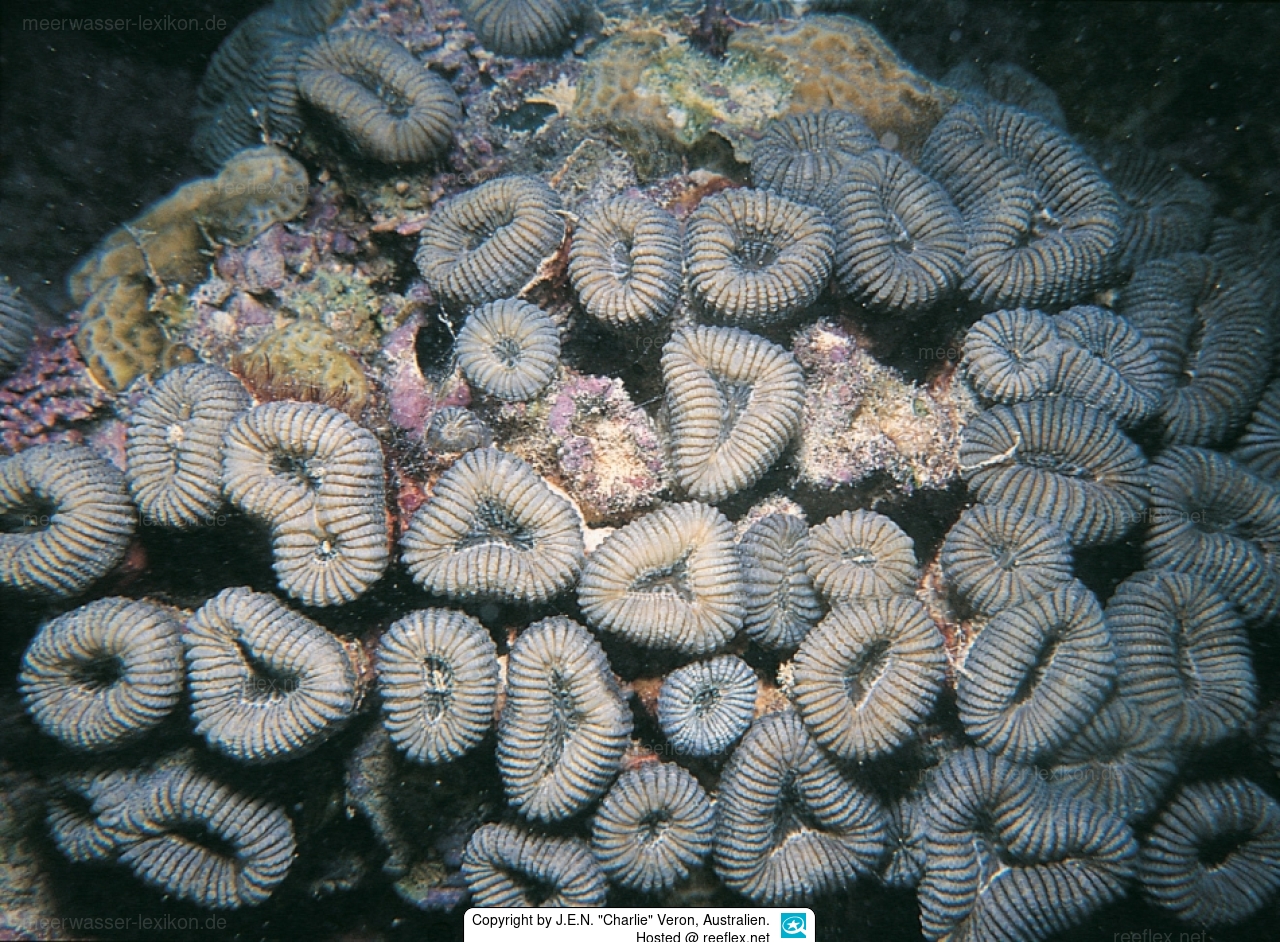Info
Verrill, 1868
Characters: Colonies have tubular (phaceloid) corallites and are corallites and are often over one metre across. Individual corallites or small groups of corallites are usually not connected or have dead basal connections and are readily broken apart and scattered. Corallites are rounded, averaging 15-20 millimetres diameter and vary in shape as illustrated. Septa of living colonies have rounded, bead-like, dentations.
Colour: Mostly bluish-grey.
Habitat: Shallow turbid reef environments.
Abundance: Common.







 Dr. John Edward Norwood "Charlie" Veron, Australien
Dr. John Edward Norwood "Charlie" Veron, Australien




